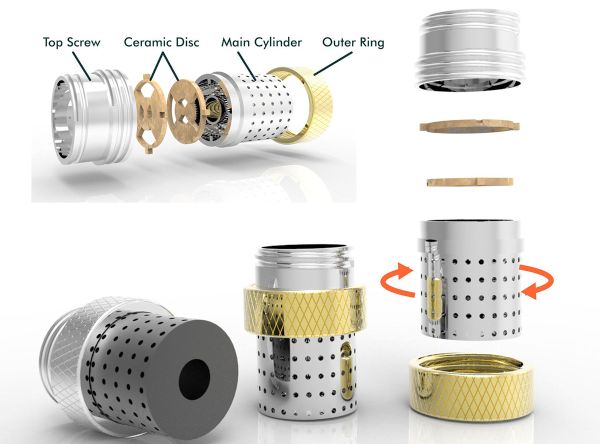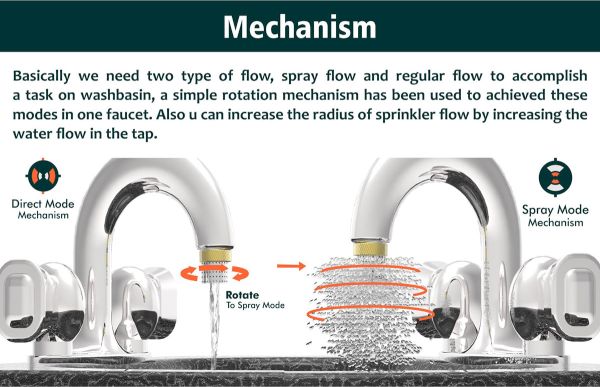Washing utensils, vegetable, or other kitchen stuff requires water supply, which mostly comes from a faucet included in the washbasin. An Indian industrial designer, Vijay Singh Thakur, analyzed that a regular faucet or tap design fails to provide efficient cleaning of utensils due to small diameter of water flow. He suggests a more efficient and water-saving design – the Hydrant.
Inspiration behind Design

The inspiration to save water and provide better cleaning for utensils, which further ensures hygiene and prevention from waterborne diseases, came from the fact that globally 650 million people do not have access to safe water, 2.3 billion lack adequate sanitation, over 500,000 children die from diarrhea caused by contaminated water and poor sanitation, 840,000 people die from water-related diseases, and women and children spend 125 million hours each day collecting water. So, it does make sense to work out how to save water and ensure complete cleaning of dishes.
Error with regular faucets

Water stream poured by a regular faucet or tap is limited to a small are due to diameter of the faucet. Therefore, it doesn’t cover the entire surface of the dish while washing. It implies that in case of regular tap, the bacteria or food reminiscences could remain unmoved, giving birth to diseases.
Commonly, people rotate or move dishes underneath tap to ensure all surface receives sufficient amount of water for cleaning. This method requires more water and more human effort, thus, more time.
How Hydrant solves it

Hydrant includes a simple rotation mechanism to enhance dish-washing experience. The opening of the faucet houses a sprinklers consisting of a Ceramic disc and a cylinder between its front and rear ends. So, Hydrant works in two modes – regular and spray mode. When spray mode is activated, the sprinkler increases the diameter of the stream as it rotates. The radius can be decreased and increases by controlling the flow of the water from tap.
The Hydrants sounds a help when it’s about washing dishes. It doesn’t deploy any complex mechanism and is, thus, affordable. In simple words, you don’t have to rotate or move the dish in order to ensure complete cleaning under tap. Dish washing consumes enormous amount of water globally and each wasted drop counts. Earth has limited resources, so it’s better to be judicious in their use. However, the project didn’t define how much water the Hydrant can save as compared to the regular taps.
Source : Behance.Net




